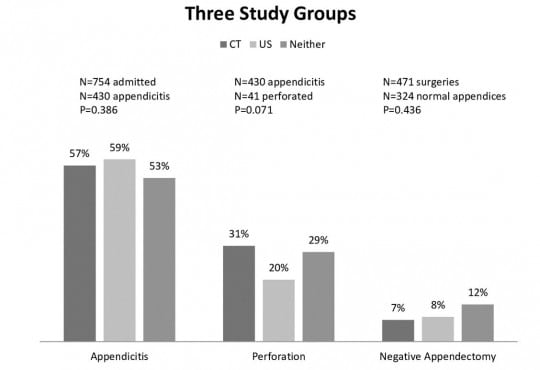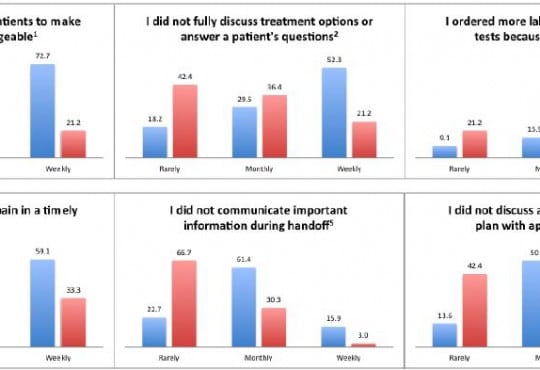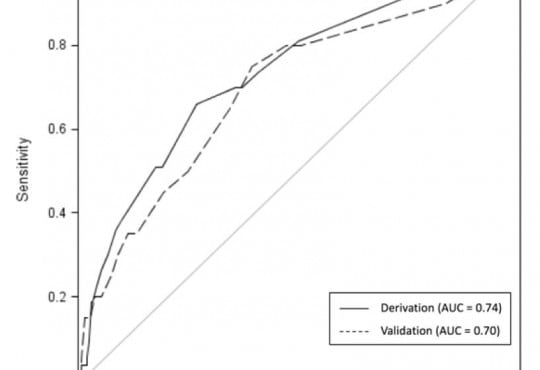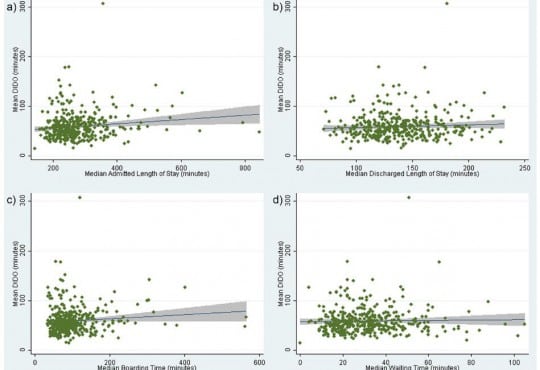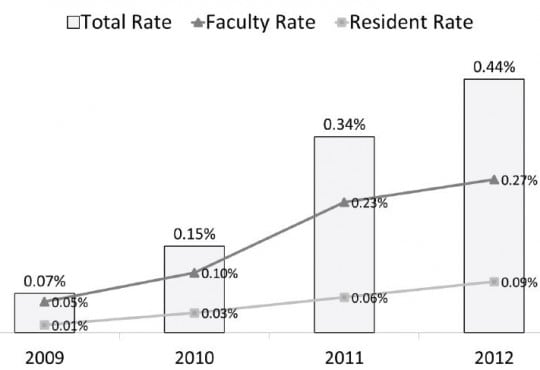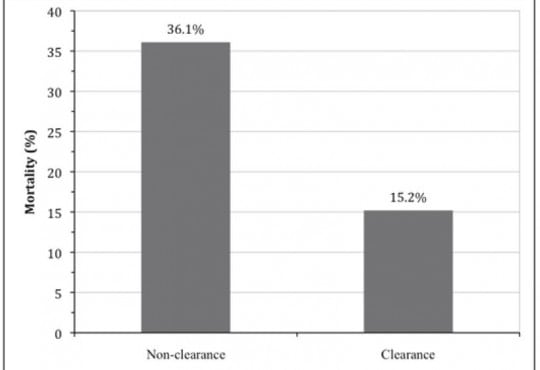Volume 16, Issue 7, December 2015.
Jessica Wall, MD, MPH, et al.
Introduction: We conducted an epidemiologic evaluation of advance directives and do-notresuscitate
(DNR) prevalence among residents of extended care facilities (ECF) presenting to the
emergency department (ED).
Methods: We performed a retrospective medical record review on ED patients originating from an
ECF. Data were collected on age, sex, race, triage acuity, ED disposition, DNR status, power-of
attorney (POA) status, and living will (LW) status. We generated descriptive statistics, and used
logistic regression to evaluate predictors of DNR status.
Results: A total of 754 patients over 20 months met inclusion criteria; 533 (70.7%) were white, 351
(46.6%) were male, and the median age was 66 years (IQR 54-78). DNR orders were found in 124
(16.4%, 95% CI [13.9-19.1%]) patients. In univariate analysis, there was a significant difference in
DNR by gender (10.5% female vs. 6.0% male with DNR, p=0.013), race (13.4% white vs. 3.1% nonwhite
with DNR, p=0.005), and age (4.0% <65 years; 2.9% 65-74 years, p=0.101; 3.3% 75-84 years,
p=0.001; 6.2% >84 years, p<0.001). Using multivariate logistic regression, we found that factors
associated with DNR status were gender (OR 1.477, p=0.358, note interaction term), POA status
(OR 6.612, p<0.001), LW (18.032, p<0.001), age (65-74 years OR 1.261, p=0.478; 75-84 years OR
1.737, p=0.091, >84 years OR 5.258, P<0.001), with interactions between POA and gender (OR
0.294, P=0.016) and between POA and LW (OR 0.227, p<0.005). Secondary analysis demonstrated
that DNR orders were not significantly associated with death during admission (p=0.084).
Conclusion: Age, gender, POA, and LW use are predictors of ECF patient DNR use. Further, DNR
presence is not a predictor of death in the hospital.



